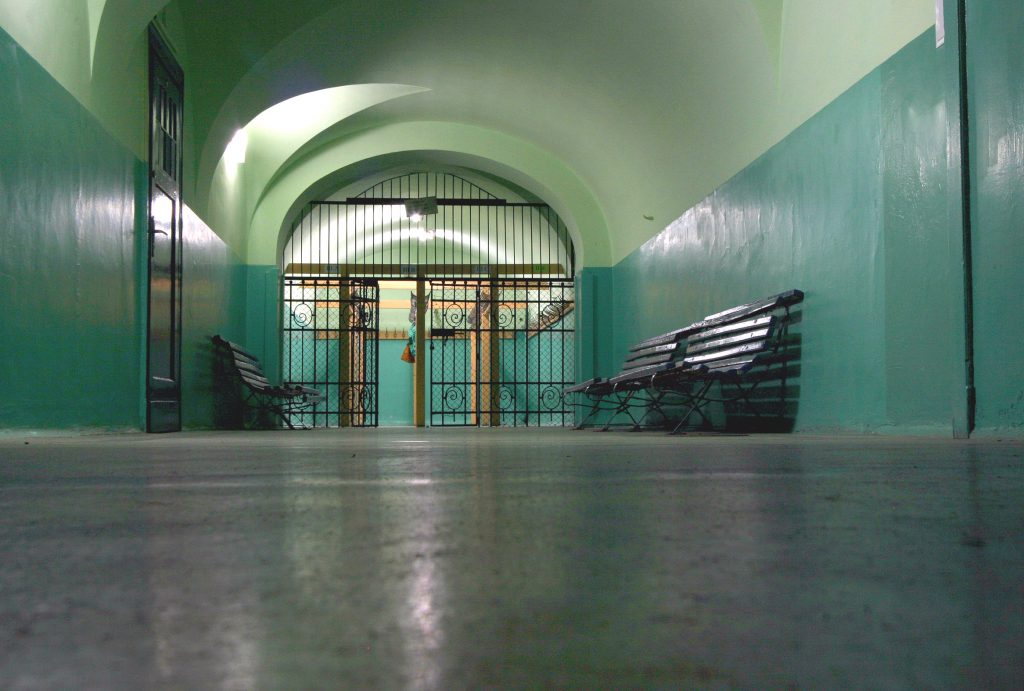 Imagine your property surrounded by land and water on all sides. Imagine that this land and water do not belong to you. To get to your own property, you use a wood trail, and you have used this trail regularly for four decades. But one day the surrounding land is sold, and the new owners want more privacy. They set up fences and “No Trespassing” signs to keep you off their property. Now your only access to your property is a public canal. Can the courts protect you? The Louisiana Third Circuit Court of Appeal (“Appellate Court”) intends to do so.
Imagine your property surrounded by land and water on all sides. Imagine that this land and water do not belong to you. To get to your own property, you use a wood trail, and you have used this trail regularly for four decades. But one day the surrounding land is sold, and the new owners want more privacy. They set up fences and “No Trespassing” signs to keep you off their property. Now your only access to your property is a public canal. Can the courts protect you? The Louisiana Third Circuit Court of Appeal (“Appellate Court”) intends to do so.
Nestled in St. Martin Parish near Herman Dupuis Road and buttressed by a public borrow canal is a piece of land known as the Ovide Daigle, Sr. Estate (“the DE Property”). This property has been co-owned by Harvey Altemus for over 55 years. Since that time, the land surrounding the DE Property has changed hands, and at the time of litigation, the surrounding land was owned by Helene Jeanne Boudreaux, Faye Guidry Hebert, Shelby Guilbeau, Michael Kidder (D/B/A Kidder Corporation), Michael and Phyllis Marks, and the State of Louisiana. Each of these individuals owned a separate piece of property surrounding Mr. A’ property. Except for Michael and Phyllis Marks (“the Markses”), the property belonging to the owners was previously owned by ALC Corp. The DE Property is almost completely landlocked by properties not belonging to its owner. In fact, the only pieces of the DE Property not surrounded by other people’s property is the area buttressed by the public borrow canal. Mr. A cannot access HD Road, the nearest roadway, without crossing another owner’s land or using the canal.
In 1974, the Markses allowed Mr. A to begin parking on their property, and ALC Corp allowed Mr. A to get into his land by way of a 30 foot wide path that went over its land. This informal arrangement continued for 24 years until Mr. A learned in 1998 that ALC Corp planned to sell or donate its property surrounding the DE Property. On May 1, 2000, Mr. A and ALC Corp executed an “Access Permit” to give Mr. A official use of the path. ALC Corp then transferred all of its land abutting the DE Property to the State of Louisiana and sold several parcels of land bordering Herman Dupuis Road. The sale to Helene Jeanne Boudreaux (“Mr. B”) included reference to the Access Permit trail, even though this trail was not officially recorded at the time of execution. The rest of the property sold to Kidder Corporation, Shelby Guilbeau, and Faye Hebert were all made required to be subject to all previous servitudes and the like on the property. Mr. A continued using the trail until he met with Mr. B on this wood trail in 2010. After this meeting, Mr. B requested the State remove the Access Permit. The State agreed and sent a by sending Mr. A a letter to this effect. At this point, in 2011, Mr. A recorded the Access Permit, and Mr. B put up a fence blocking Mr. A’s access to his own property. Hebert and Guilbeau then put up signs on the property telling others entry was not allowed, blocking Mr. A’s opening to the trail. On September 4, 2013, Mr. A filed a Petition for Declaratory Judgment and for Damages against the State of Louisiana, Mr. B, Hebert, Guilbeau, and Kidder Corporation (the Markses were later joined in an amended petition) seeking a court recognition of the 30-foot trail as an apparent servitude giving Mr. A a right to cross the properties. Both the State and the Markses entered into Consent Judgments with Mr. A. The remaining property owners sought to strike these Consent Judgments. At trial, the court granted Mr. A his right-of-way and declined to award damages. Mr. B, Hebert, Guilbeau, and Kidder (collectively “Appellants”) appealed the decision of the Trial Court.
 People bring lawsuits in order to obtain compensation for wrongs they have endured. Even when there is no dispute about liability, determining the appropriate categories and amounts of damages can be complicated as it involves numerous legal and technical issues. Damages can encompass everything from past and future medical expenses to scarring to loss of enjoyment of life. However, there must be sufficient evidence from which a court can draw to support the award of damages. The following lawsuit that stemmed from a fight at a casino illustrates some of these principles.
People bring lawsuits in order to obtain compensation for wrongs they have endured. Even when there is no dispute about liability, determining the appropriate categories and amounts of damages can be complicated as it involves numerous legal and technical issues. Damages can encompass everything from past and future medical expenses to scarring to loss of enjoyment of life. However, there must be sufficient evidence from which a court can draw to support the award of damages. The following lawsuit that stemmed from a fight at a casino illustrates some of these principles. Louisiana Personal Injury Lawyer Blog
Louisiana Personal Injury Lawyer Blog


 In Louisiana, determining the allocation of fault is an important part of lawsuits because it directly impacts the damages you can be awarded. If you are found 40% at fault, then you will only be able to collect damages for 60% of total damages.
In Louisiana, determining the allocation of fault is an important part of lawsuits because it directly impacts the damages you can be awarded. If you are found 40% at fault, then you will only be able to collect damages for 60% of total damages.  Imagine going to get a massage and leaving with an injury that forever altered your life. After such an injury, it is difficult to put a dollar value on these injuries. The following lawsuit discusses the types of damages that can be sought by a Plaintiff who believes that they have been injured by a massage gone wrong.
Imagine going to get a massage and leaving with an injury that forever altered your life. After such an injury, it is difficult to put a dollar value on these injuries. The following lawsuit discusses the types of damages that can be sought by a Plaintiff who believes that they have been injured by a massage gone wrong. There are multiple requirements and policies that claimants must follow in order to be eligible to recover on a claim under a National Flood Insurance Program (“NFIP”) Standard Flood Insurance Policy (“SFIP”).
There are multiple requirements and policies that claimants must follow in order to be eligible to recover on a claim under a National Flood Insurance Program (“NFIP”) Standard Flood Insurance Policy (“SFIP”).  The National Flood Insurance Program (“NFIP”) is intended to provide affordable flood insurance on fair terms. The Federal Emergency Management Agency (“FEMA”) is responsible for administering and regulating NFIP. There are multiple requirements and policies that claimants must follow in order to be eligible to recover on their claim. The following lawsuit looks at the requirements necessary to prove flood damages under the terms of a Standard Flood Insurance Policies (“SFIP”).
The National Flood Insurance Program (“NFIP”) is intended to provide affordable flood insurance on fair terms. The Federal Emergency Management Agency (“FEMA”) is responsible for administering and regulating NFIP. There are multiple requirements and policies that claimants must follow in order to be eligible to recover on their claim. The following lawsuit looks at the requirements necessary to prove flood damages under the terms of a Standard Flood Insurance Policies (“SFIP”). You may think that your company would be pleased if you try to comply with company policies. However, this is not always the case, especially when following policies can lead to adverse outcomes for the company, such as delayed flights or lost profits.
You may think that your company would be pleased if you try to comply with company policies. However, this is not always the case, especially when following policies can lead to adverse outcomes for the company, such as delayed flights or lost profits.  This is a continuation of a previous post on the “DE Property,” an enclosed estate in St. Martin Parish.
This is a continuation of a previous post on the “DE Property,” an enclosed estate in St. Martin Parish. Imagine your property surrounded by land and water on all sides. Imagine that this land and water do not belong to you. To get to your own property, you use a wood trail, and you have used this trail regularly for four decades. But one day the surrounding land is sold, and the new owners want more privacy. They set up fences and “No Trespassing” signs to keep you off their property. Now your only access to your property is a public canal. Can the courts protect you? The
Imagine your property surrounded by land and water on all sides. Imagine that this land and water do not belong to you. To get to your own property, you use a wood trail, and you have used this trail regularly for four decades. But one day the surrounding land is sold, and the new owners want more privacy. They set up fences and “No Trespassing” signs to keep you off their property. Now your only access to your property is a public canal. Can the courts protect you? The  Entrusting a child to the care of a school bus requires a certain amount of faith that they will arrive at the correct destination, safely. For any parent or guardian this evokes a certain amount of anxiety. For a parent with a special needs child, this act of faith likely garners even greater angst. Unfortunately, one Lafourche Parish parent’s fears materialized when her special needs son was struck by a car at his bus stop one afternoon. Whether the Lafourche Parish School Board (“LPSB”) could be held responsible became an issue for a jury in this recent lawsuit.
Entrusting a child to the care of a school bus requires a certain amount of faith that they will arrive at the correct destination, safely. For any parent or guardian this evokes a certain amount of anxiety. For a parent with a special needs child, this act of faith likely garners even greater angst. Unfortunately, one Lafourche Parish parent’s fears materialized when her special needs son was struck by a car at his bus stop one afternoon. Whether the Lafourche Parish School Board (“LPSB”) could be held responsible became an issue for a jury in this recent lawsuit.  It’s the subject of Lifetime Channel movies but something that no parent ever wants to believe would ever really happen. A teacher, a person in authority over minors, takes advantage of a student and engages in sexual misconduct. When this happens, is it ever appropriate to apportion some percentage of fault to the student? In a recent lawsuit out of Calcasieu Parish, the school board attempted to answer that question in the affirmative, but was taught a different lesson by the Louisiana Third Circuit Court of Appeal.
It’s the subject of Lifetime Channel movies but something that no parent ever wants to believe would ever really happen. A teacher, a person in authority over minors, takes advantage of a student and engages in sexual misconduct. When this happens, is it ever appropriate to apportion some percentage of fault to the student? In a recent lawsuit out of Calcasieu Parish, the school board attempted to answer that question in the affirmative, but was taught a different lesson by the Louisiana Third Circuit Court of Appeal.